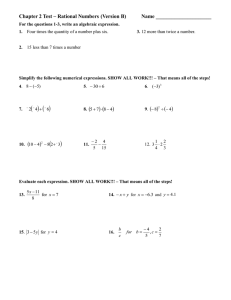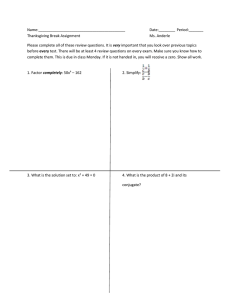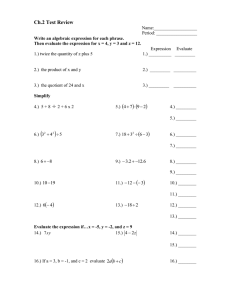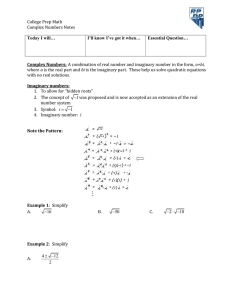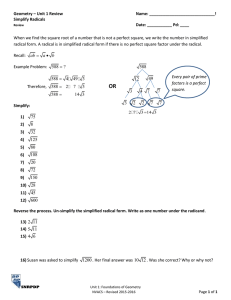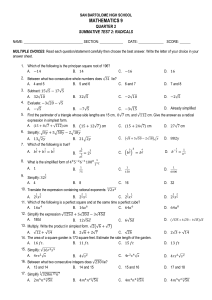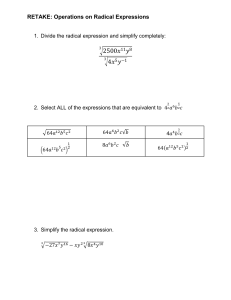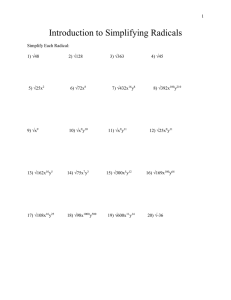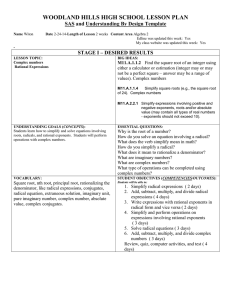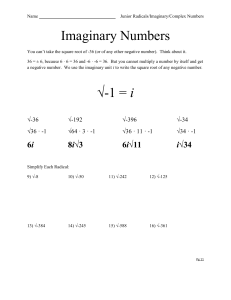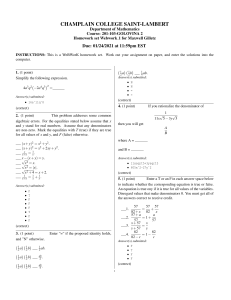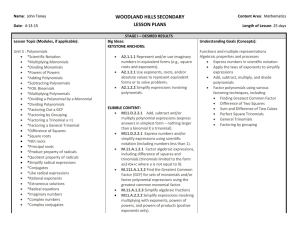Introduction to Simplifying Radicals
advertisement
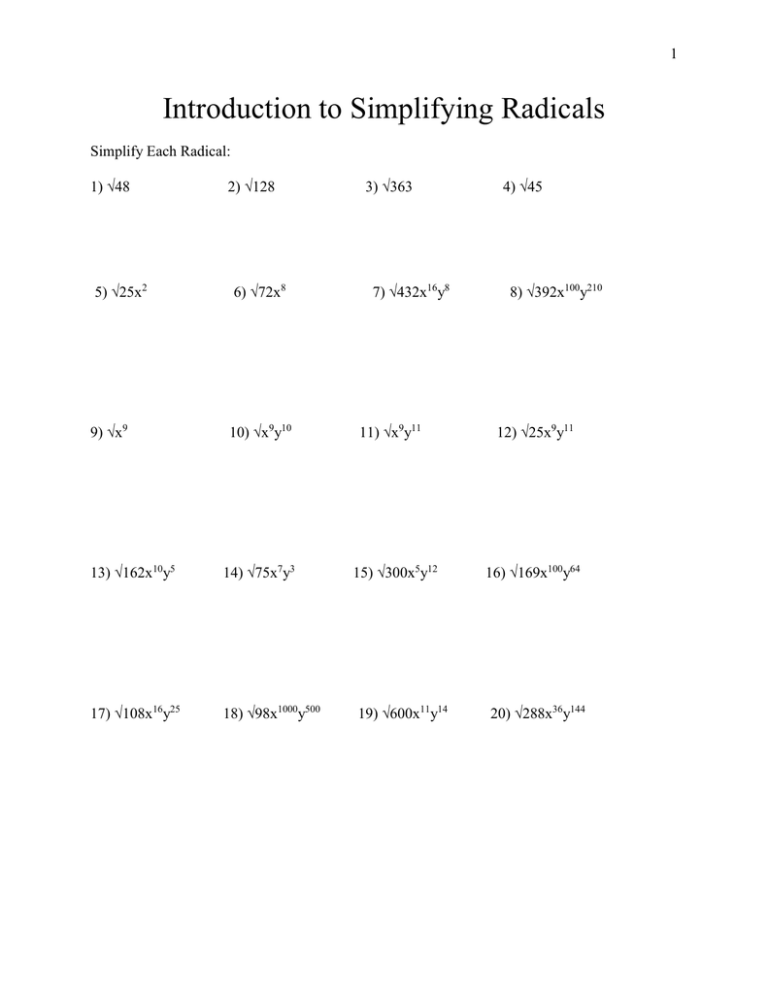
1 Introduction to Simplifying Radicals Simplify Each Radical: 1) √48 2) √128 5) √25x2 6) √72x8 9) √x9 10) √x9y10 13) √162x10y5 14) √75x7y3 17) √108x16y25 18) √98x1000y500 3) √363 7) √432x16y8 11) √x9y11 15) √300x5y12 19) √600x11y14 4) √45 8) √392x100y210 12) √25x9y11 16) √169x100y64 20) √288x36y144 2 Simplify Each Radical: 1) √49x49y81 2) √72x8 3) √363x16y8 4) √392x100y210 5) √450x10y5 6) √75x7y3 7) √300x5y12 8) √-36 Imaginary Numbers You can’t take the square root of -36 (or of any other negative number). Think about it. 36 = ± 6, because 6 · 6 = 36 and -6 · -6 = 36. But you cannot multiply a number by itself and get a negative number. We use the imaginary unit i to write the square root of any negative number. √-1 = i √-36 √36 · -1 6i Simplify Each Radical: 9) √-8 10) √-50 11) √-242 12) √-125 13) √-384 15) √-588 16) √-361 14) √-245 17) i1 18) i2 19) i3 20) i4 21) i5 22) i6 23) i7 24) i8 25) i9 26) i10 27) i11 28) i12 29) i21 30) i33 31) i32 32) i26 3 33) (√-10)2 34) √-10 · √-20 35) √-3 · √-12 36) √-18 · √-6 37) (3i)2 38) (i√3 )2 39) (-i )2 40) – i2 Complex Numbers A complex number is a number that is the sum of a real number and a regular number. Each complex number should be written in the standard form a + bi. Example: 8 + 3i Perform the indicated operation: 33) (4 + 2i) + (7 – 2i) 34) 3(6-2i) – 4(4 + 3i) 35) 5i(3 + 2i) – 3i(4 + 8i) 36) (3 – 2i)(4 + 5i) 37) (11- 5i)(7 – 3i) 38) (4 + 5i)(7 – 3i) 39) 2i2(3 – 8i) – 4i(12 – 7i) 40) (9 + 3i)(12 + 2i) 41) 5i2(3 + 2i) – 3i2(4 + 8i)
